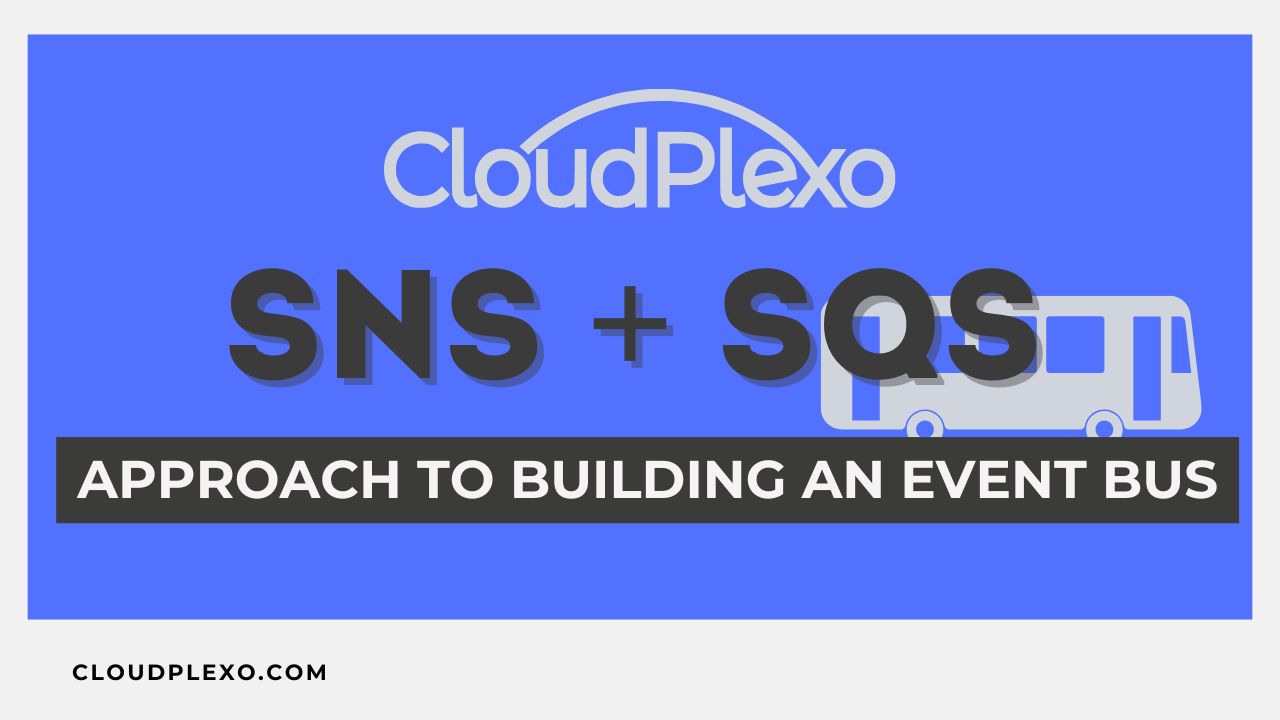AWS SNS and SQS - How To Build A Robust Event Bus Architecture
By abdulmumin yaqeen
on October 3, 2024

AWS SNS and SQS - How To Build A Robust Event Bus Architecture
For certain types of large-scale or complex systems, creating a scalable and decoupled event-driven architecture can provide significant benefits in terms of flexibility, maintainability, and performance. Amazon Web Services (AWS) offers two powerful services that, when combined, can form the backbone of an efficient event bus: Simple Notification Service (SNS) and Simple Queue Service (SQS).
This article will explore how these services work individually and how they can be integrated to create a robust event bus architecture.
SNS and SQS
Amazon Simple Notification Service (SNS)
SNS is a fully managed pub/sub messaging service. It allows you to create topics and publish messages to those topics. Subscribers can then receive these messages through various protocols, including HTTP/S, email, SMS, and more importantly for our discussion, SQS.
Key features of SNS:
- Instantaneous, push-based delivery
- Simple APIs and easy integration with applications
- Flexible message delivery over multiple transport protocols
- Inexpensive, pay-as-you-go model with no upfront costs
Amazon Simple Queue Service (SQS)
SQS is a fully managed message queuing service. It enables you to decouple and scale microservices, distributed systems, and serverless applications. SQS eliminates the complexity and overhead associated with managing and operating message-oriented middleware.
Key features of SQS:
- Unlimited throughput and number of messages in queue
- Retention of messages for up to 14 days
- Multiple readers and writers interacting with the same queue
- Message lock times ensuring a message is processed only once
Building an Event Bus with SNS and SQS
Now, let's explore how these two services can be combined to create an effective event bus architecture.
The Basic Architecture
- Event Publishers: These are your applications or services that generate events. They publish messages to SNS topics.
- SNS Topics: Each topic represents a specific type of event or category of events.
- SQS Queues: These act as subscribers to the SNS topics. Each queue can be dedicated to a specific type of event consumer.
- Event Consumers: These are your applications or services that process the events. They poll the SQS queues for messages.
Here's a diagram illustrating this basic architecture:

How It Works
- An event publisher sends a message to an SNS topic.
- SNS immediately broadcasts this message to all subscribed SQS queues.
- The messages are now available in the SQS queues for processing.
- Event consumers poll their respective SQS queues and process the messages.
Let's look at a more detailed flow of messages in this architecture:

Advantages of This Architecture
- Decoupling: Publishers and consumers are completely decoupled. Publishers don't need to know who will process the events, and consumers don't need to know who generated them.
- Scalability: Both SNS and SQS can handle virtually unlimited throughput. You can easily add more consumers to process messages faster without affecting the publishers.
- Reliability: SQS ensures that each message is delivered at least once and provides features like message retention and dead-letter queues for handling failed processing attempts.
- Flexibility: You can easily add new consumers or remove existing ones without affecting the rest of the system. This makes it easy to evolve your architecture over time.
- Fan-out: A single SNS topic can deliver messages to multiple SQS queues, allowing you to process the same event in different ways for different purposes.
The following diagram illustrates the concept of decoupling in this architecture:

Considerations
- Message Format: Standardize your message format across all publishers. Consider using a schema registry to manage message schemas.
- Error Handling: Implement robust error handling in your consumers. Use SQS dead-letter queues to capture messages that fail processing.
- Monitoring: Set up monitoring and alerting for both SNS and SQS. Watch for metrics like queue depth, delivery delays, and error rates.
- Security: Use AWS IAM roles and policies to secure access to your SNS topics and SQS queues. Encrypt sensitive data in your messages.
- Cost Optimization: Monitor your usage and adjust your architecture if needed. Remember, you pay for API calls, data transfer, and (in the case of SQS) the duration that messages are kept in queues.
Wrap up
The combination of AWS SNS and SQS provides a powerful foundation for building a scalable, reliable, and flexible event bus architecture. With both combined, you can create a system that can handle high volumes of events, scale easily, and evolve with your changing business needs. As with any architectural decision, consider your specific use case, expected load, and requirements when implementing this pattern.